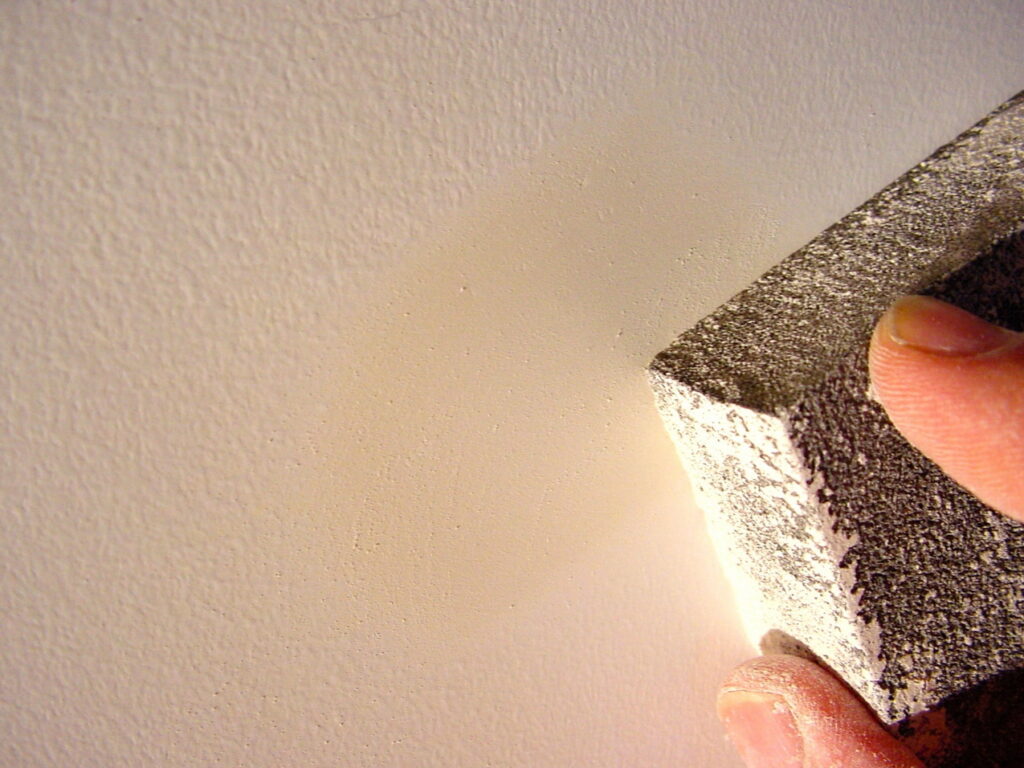If interior painting is in your plans (or you plan to have your home painted professionally), I’d like to show you three details that will make the job go better and deliver longer lasting, more economical results. As simple as interior painting sounds, there are important tips that are easy to overlook.
Patching is key
Almost every wall that needs painting has dents and holes, and these only get marginally less conspicuous after paint goes on. To make drywall damage disappear completely under new paint, you need to make these flaws disappear first, and your eyes are not the best way to determine how well you’ve patched something.
Running your fingers over a patched area is much more effective at detecting flaws. If you can feel anything different than the surrounding wall as your fingertips slide over the surface, some flaw will remain visible after paint dries. But before you get that far, you need to follow three essential patching steps.

Almost every flaw in drywall includes the frazzled edges of the paper outer covering, and these frazzles won’t go away on their own after patching. This is why the first step is to get rid of the frazzles.
Pound the frazzles so they’re below the surface. I use the end of the handle on my patching trowel for this and it works perfectly. Four or five hits will flatten the paper and make a small, concave depression over and around the hole you’re patching. Without this initial pounding work, and the resulting depression, your repair will never be invisible.
Next, use a four-inch drywall knife to smear drywall compound into the damage zone and slightly higher than the surrounding drywall. I’ve found that real drywall compound works better than any product made only for patching walls. My favourite is a low-dust product called CGC Dust Control.
Finish up by shining a bright light across the wall at a shallow angle as you use a rectangular sanding sponge to smooth the area and make it flat. Sand cautiously because the sweet spot between too much sanding and too little is narrow. The trick when sanding a patch is to make sure the edges of the dried compound feather away gradually around the edges. Close your eyes and if you can feel anything different as your fingers slide, you’ve not yet got a flawless patch.

Use the best paint
Generally speaking, the labour to apply paint costs about twice as much as the best interior latex you can buy. And even if you plan to do the painting yourself, this fact should affect your paint choice. Applying paint will cost you, either in money or time. Why not get the longest lasting results for a given amount of labour?
The last painting job I did was over at my daughter’s place. We used SICO Endurance in the flat sheen and it’s excellent. I’m constantly amazed at how much better interior latex gets with the latest formulations. It covered amazingly well, the flat sheen looks fabulous, and Endurance has proven to be very tough and scrubbable, even in the flat sheen — no gloss at all.
The professional painter I hired was particularly impressed (we didn’t have DIY time before my daughter moved in). But why flat and not the every-popular eggshell sheen?
Choose a flat sheen
Once upon a time, the glossier the paint, the tougher it was. Not so today. My favourite interior latex is always as flat as possible since this hides flaws much better than any paint with a gloss. And the good news is that today’s flat paints are every bit as tough as shinier versions.
Flat walls and ceilings show flaws far less (or not at all) compared with shinier paint, even including relatively low-sheen options like eggshell. Try some flat and see what I mean.






